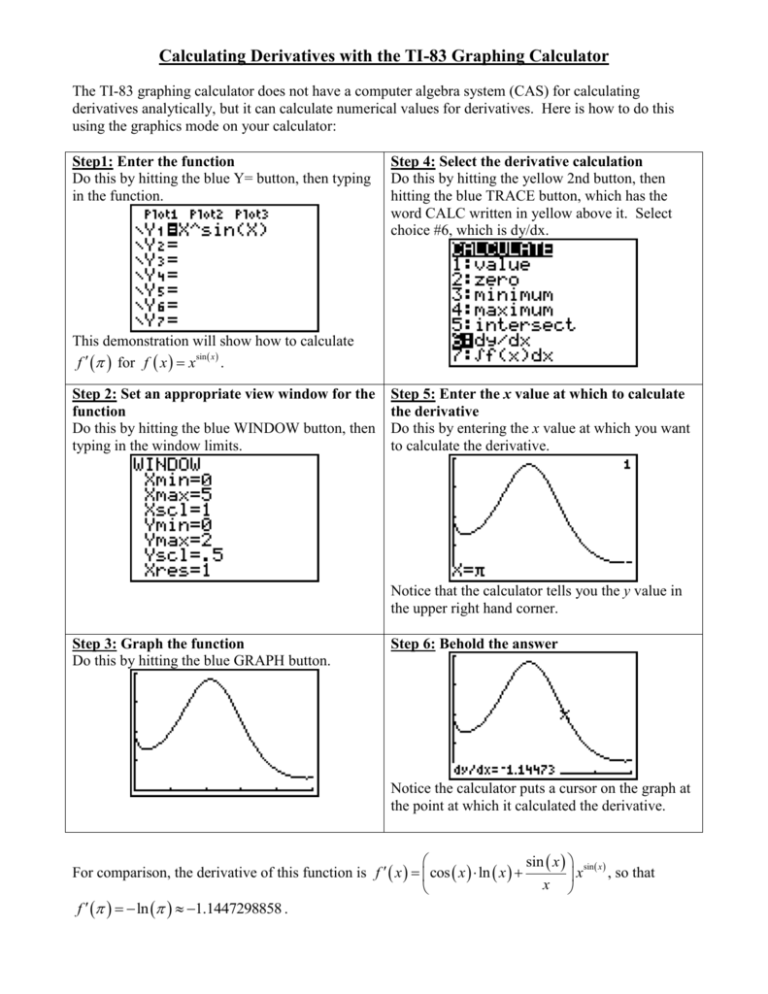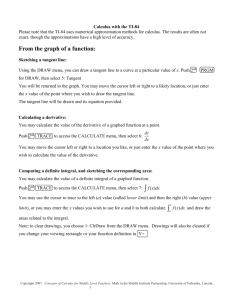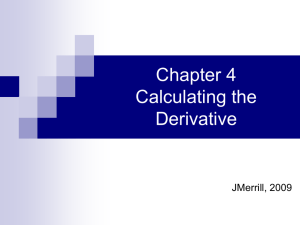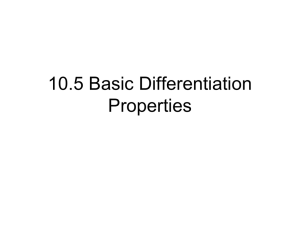Calculating Derivatives with the TI
advertisement

Calculating Derivatives with the TI-83 Graphing Calculator The TI-83 graphing calculator does not have a computer algebra system (CAS) for calculating derivatives analytically, but it can calculate numerical values for derivatives. Here is how to do this using the graphics mode on your calculator: Step1: Enter the function Do this by hitting the blue Y= button, then typing in the function. Step 4: Select the derivative calculation Do this by hitting the yellow 2nd button, then hitting the blue TRACE button, which has the word CALC written in yellow above it. Select choice #6, which is dy/dx. This demonstration will show how to calculate sin x f for f x x . Step 2: Set an appropriate view window for the function Do this by hitting the blue WINDOW button, then typing in the window limits. Step 5: Enter the x value at which to calculate the derivative Do this by entering the x value at which you want to calculate the derivative. Notice that the calculator tells you the y value in the upper right hand corner. Step 3: Graph the function Do this by hitting the blue GRAPH button. Step 6: Behold the answer Notice the calculator puts a cursor on the graph at the point at which it calculated the derivative. sin x sin x For comparison, the derivative of this function is f x cos x ln x , so that x x f ln 1.1447298858 . Here is how to calculate the same derivative using the nDeriv( function on your calculator: Step1: Choose the nDeriv( computation Do this by hitting the MATH button, then selecting choice #8, nDERIV(. Step 2: Enter the correct parameters into the nDeriv( function and behold the answer. Notice the last parameter above uses a smaller value of = 0.0001 than the default of 0.001. Also notice that the last digit is incorrect. That is an approximation error. The nDeriv( function requires three parameters, and can use up to four parameters. Here are the parameters it expects: nDeriv(expression, variable, x-value [, ]) expression is the function for which you want to compute the derivative. variable, is the variable to be considered as the independent variable; this is required because some expressions may use more than one letter. x-value is the x value at which you want to evaluate the derivative. is the tolerance (or h value) used by the calculator in the computation; it has a default value of = 0.001 if not specified in the parameter list when the function is called. The nDeriv( function uses the “symmetric quotient difference method,” which approximates the derivative as the slope of a secant line through the given point. Specifically, this function computes f a f a the numerical derivative using this formula: f a . In words, the nDeriv( 2 function finds the slope of the secant line that has one x value more than a, and the other x value less than a. Thus, y = f(a + ) – f(a – ) and x = (a + ) – (a – ) = 2. As becomes smaller, the answer becomes more accurate, but you have to be careful, because the formula can produce a numerical result for points on a function where the derivative is not defined. Here is an example of the nDeriv( function giving an answer at a point where the derivative is undefined:











